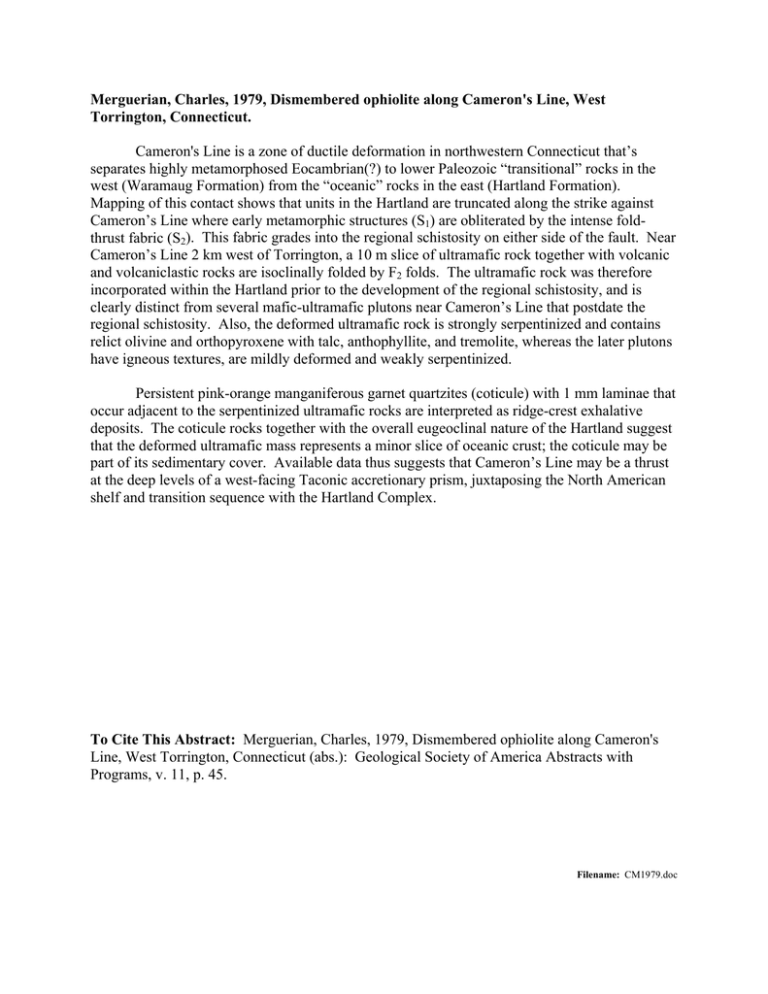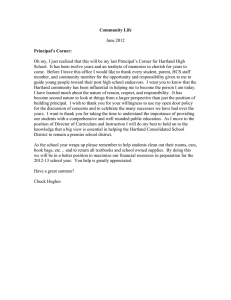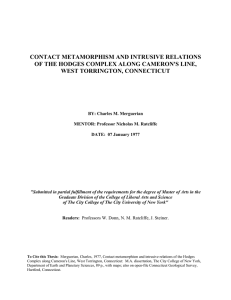Merguerian, Charles, 1979, Dismembered ophiolite along Cameron's Line, West Torrington, Connecticut.
advertisement

Merguerian, Charles, 1979, Dismembered ophiolite along Cameron's Line, West Torrington, Connecticut. Cameron's Line is a zone of ductile deformation in northwestern Connecticut that’s separates highly metamorphosed Eocambrian(?) to lower Paleozoic “transitional” rocks in the west (Waramaug Formation) from the “oceanic” rocks in the east (Hartland Formation). Mapping of this contact shows that units in the Hartland are truncated along the strike against Cameron’s Line where early metamorphic structures (S1) are obliterated by the intense foldthrust fabric (S2). This fabric grades into the regional schistosity on either side of the fault. Near Cameron’s Line 2 km west of Torrington, a 10 m slice of ultramafic rock together with volcanic and volcaniclastic rocks are isoclinally folded by F2 folds. The ultramafic rock was therefore incorporated within the Hartland prior to the development of the regional schistosity, and is clearly distinct from several mafic-ultramafic plutons near Cameron’s Line that postdate the regional schistosity. Also, the deformed ultramafic rock is strongly serpentinized and contains relict olivine and orthopyroxene with talc, anthophyllite, and tremolite, whereas the later plutons have igneous textures, are mildly deformed and weakly serpentinized. Persistent pink-orange manganiferous garnet quartzites (coticule) with 1 mm laminae that occur adjacent to the serpentinized ultramafic rocks are interpreted as ridge-crest exhalative deposits. The coticule rocks together with the overall eugeoclinal nature of the Hartland suggest that the deformed ultramafic mass represents a minor slice of oceanic crust; the coticule may be part of its sedimentary cover. Available data thus suggests that Cameron’s Line may be a thrust at the deep levels of a west-facing Taconic accretionary prism, juxtaposing the North American shelf and transition sequence with the Hartland Complex. To Cite This Abstract: Merguerian, Charles, 1979, Dismembered ophiolite along Cameron's Line, West Torrington, Connecticut (abs.): Geological Society of America Abstracts with Programs, v. 11, p. 45. Filename: CM1979.doc

